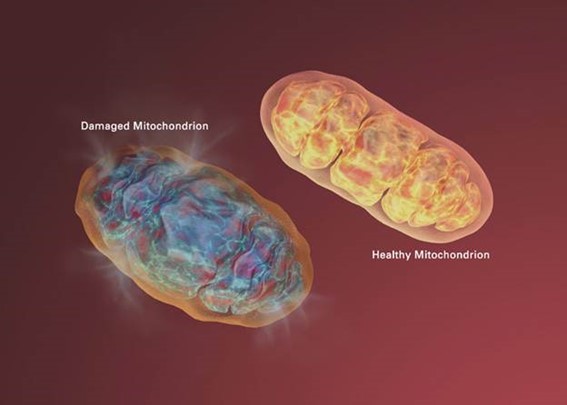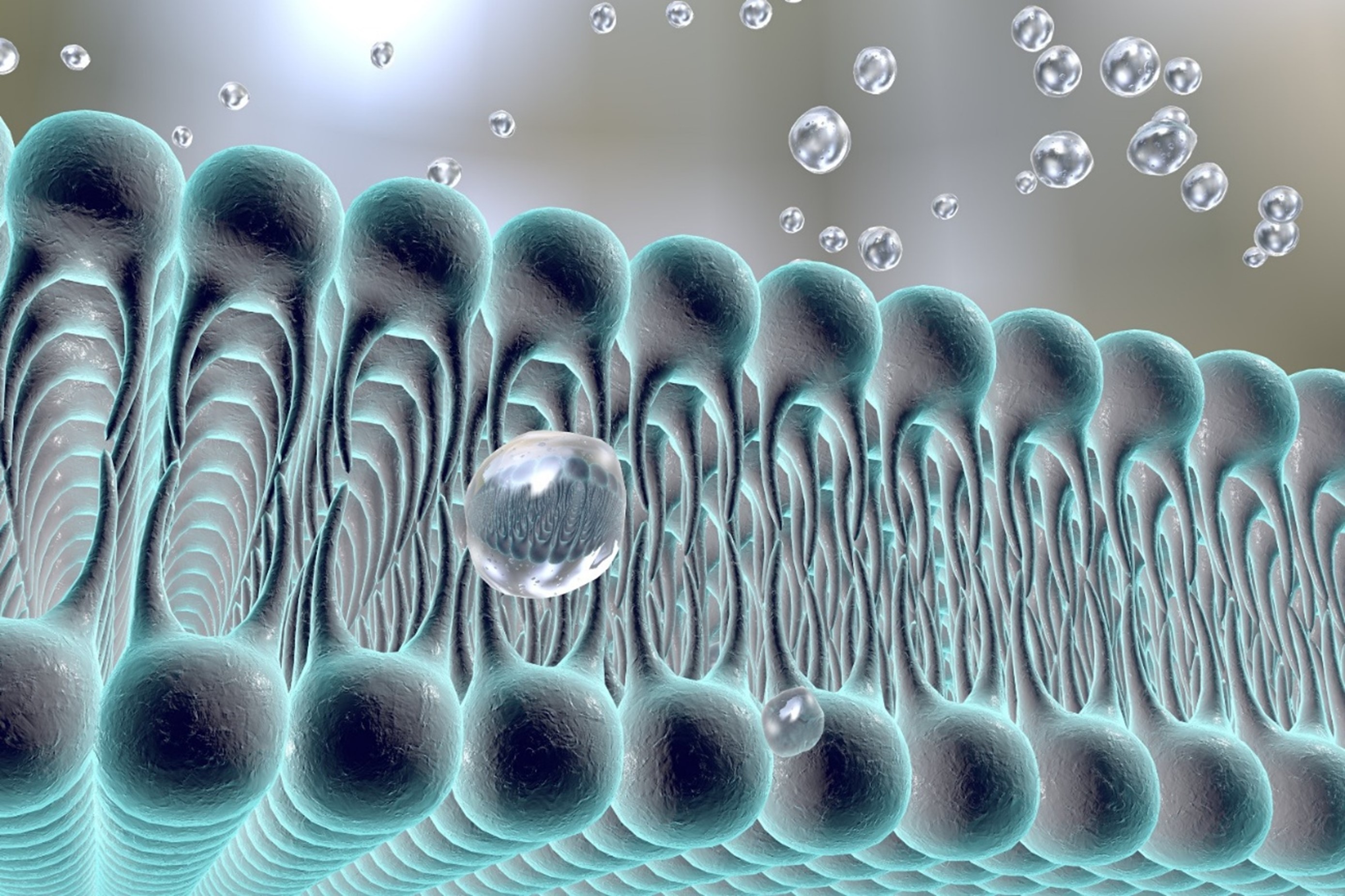The cell membrane, also called the plasma membrane, is not merely a barrier—it’s the intelligent interface between life and the environment. Its structure and function are foundational to understanding how cells maintain balance, communicate, and respond to both external and internal stimuli. Cell membranes aren’t static—they’re dynamic, lipid-based living structures. Anything that oxidizes, destroys, or alters their lipid balance sabotages metabolism and signaling, causing premature aging and chronic disease.
This might be one of the most important essays I have written about the biology of life because the health and integrity of all our cell membranes, including the inner and outer membranes of all the cells’ mitochondria, are a central part of overall health and longevity. Now we have to pay attention to one medicine, considered both natural and pharmaceutical, PPC (Phosphatidylcholine), which all membranes can use to repair themselves.
I wrote about it earlier in terms of its use for cardiovascular disease. Its multi-modal action – simultaneously affecting cell membranes, cholesterol transport, and inflammation – is advantageous in complex metabolic diseases. Here, we delve into the depths of life itself and what contains and continues it. Want to live longer and be healthier? Restore your membranes with PPC.
The cell membrane regulates what enters and leaves the cell. It allows essential molecules, such as water, oxygen, and nutrients, to enter while removing waste products and toxins. This semi-permeable nature is achieved through a lipid bilayer embedded with proteins that act as transport channels, receptors, and pumps.
Modern research increasingly recognizes the membrane as the actual “brain” of the cell, not just a passive barrier. Biologist Bruce Lipton highlighted decades ago that cell behavior changes dramatically when membranes detect environmental shifts, even when DNA remains static. This reframes heredity—your genes are not entirely in control; your cell membranes and environment are.
Healthy cell membranes block the entry of invasive agents—bacteria, viruses, and synthetic chemicals. Industrial pollutants (like PFAS, pesticides, microplastics, and heavy metals) can intercalate into membranes, making them leaky or dysfunctional. This leads to inflammation, mitochondrial damage, and accelerated aging.
The quality of cell membranes depends directly on fats. One is only as
conscious as your cells’ ability to respond intelligently to their environment.
We will discuss not only PPC and liver restoration but also the intersection of biochemistry and systemic coherence, both of which depend on the integrity of the body’s cell membranes. The cell membrane is where Voltage, signaling, and consciousness meet matter.
Nutritional phospholipids aren’t just molecules—they’re structural life supports. When the membrane potential collapses (due to oxidative stress, EMF, toxins, or psychiatric drugs), the organism’s self-organization deteriorates. PPC is one of the few agents that literally reconstitutes the structural integrity upon which cellular intelligence depends. PPC is the substance —the best molecule — for membrane regeneration. Cell membranes, which are crucial inside the cell’s mitochondria, are the key to biological activity.
PCC is a phospholipid — a molecule that forms the membrane of every cell, including inside the cells’ mitochondria. PPC is derived from natural sources such as soy lecithin. It’s available in a highly purified form containing a high percentage of unsaturated phosphatidylcholine species, most notably dilinoleoylphosphatidylcholine (DLPC). This specific molecule integrates directly into damaged cellular membranes — and, initially, over 50 years ago, was used to repair and restore the integrity of hepatocyte (liver cell) membranes.

Polyenylphosphatidylcholine (PPC) is a purified extract of phosphatidylcholine rich in polyunsaturated fatty acids. It is a form of phosphatidylcholine (the major phospholipid in cell membranes). Available in liquid (for the strong, hearty who already take enough pills) or in gel capsule form.
PPC literally rebuilds the lipid bilayers of hepatocytes damaged by alcohol, fatty infiltration, medications, or toxins. The liver is unique in how rapidly it can regenerate if given the right substrates — PPC provides those substrates. And in a world as toxic as ours, this is incredibly important for health and longevity.
PPC is not only for liver health but also a crucial element in detoxification, a principal function of the liver and of all cells. Too many “detox” products flood the liver with mobilized toxins before the liver is capable of neutralizing and exporting them. PPC works differently:
- It heals first, increasing the liver’s capacity for safe detox.
- Only afterward — once membranes and bile flow are restored — does effective “detoxification” occur naturally.
This sequencing (heal → detox) is crucial. Otherwise, you risk redistributing toxins or worsening systemic inflammation. Thus, PPC isn’t a typical “detox supplement.”
It is a biological membrane-restoration compound that provides the liver with the raw materials it needs to self-heal. When this foundation is rebuilt, detox pathways (phase I/II, bile excretion, glutathione conjugation) begin to operate optimally again.
Phosphatidylcholine (PPC) and Mitochondrial Membranes

Phosphatidylcholine is the most abundant lipid in mitochondrial membranes (both inner and outer), comprising up to 40–50% of their composition. Mitochondria, the cell’s energy powerhouses, rely on PPC for structural integrity, as it forms the fluid bilayer that houses electron transport chains, enzymes, and transport proteins.
PPC’s polyunsaturated fatty acid chains (e.g., linoleic acid) ensure membrane fluidity, enabling protein movement and signaling. At the same time, its choline head group facilitates interactions with other lipids, such as phosphatidylethanolamine (PE), in non-bilayer structures critical to fusion/fission dynamics.
Disruptions in PPC levels or composition—often driven by oxidative stress, aging, or disease—can impair ATP production, trigger apoptosis, and contribute to pathologies such as liver disease by compromising mitochondrial bioenergetics. PPC supplementation supports mitochondrial membrane repair, reducing steatosis and inflammation by restoring lipid asymmetry and transport functions.
PPC isn’t just a passive scaffold—it’s dynamic, influencing biogenesis, protein import, and resilience:
- Membrane Fluidity and Dynamics: Maintains optimal viscosity for cristae folding (inner membrane ridges that house respiratory complexes) and for fusion/fission, preventing mitochondrial fragmentation under stress.
- Protein Translocation and Assembly: Facilitates import of nuclear-encoded proteins via translocases (e.g., TIM23 complex); low PPC disrupts sorting and assembly machinery (SAM), halting biogenesis.
- Antioxidant Protection: Shields against ROS-induced damage to cardiolipin (another mitochondrial lipid), preserving electron transport efficiency and reducing permeability transition pore-mediated leakage of energy.
- Lipid Transport and Equilibration: Enables bidirectional flux of precursors (e.g., CDP-choline) across outer/inner membranes, ensuring even distribution for ongoing synthesis.
PPC bolsters mitochondrial membranes against ROS induced by steatosis, enhancing beta-oxidation and reducing fibrosis—trials show 15–25% reductions in ALT with 1,200 mg/day over 3 months. Dose: 300–1,200 mg/day oral (soy-derived). Alanine Aminotransferase (ALT) is a liver enzyme primarily found in hepatocytes; elevated levels (>40–50 U/L in adults) signal cell injury or inflammation, common in conditions such as NAFLD/MAFLD, viral hepatitis, or toxin exposure.
Deterioration of inner-membrane lipids and CL oxidation correlates with Cancer.
Damage to the inner membranes of the mitochondria, to the Cardiolipins (CLs), which are a family of diphosphatidylglycerol lipids—unique, cone-shaped phospholipids that make up ~20% of the inner mitochondrial membrane’s composition, are fragility points where failing membrane depletion hits hardest, turning the cell’s engine room into a stuttering relic. Think Cancer here: normal oxidation with oxygen goes into the toilet, while dirty fermentation takes hold so that cells can survive the drop in energy production. Inner-membrane lipid deterioration and CL oxidation correlate with mitochondrial failure, dysregulation of apoptosis, and metabolic reprogramming in Cancer. In Cancer and degenerative disease, decreased total CL content is observed, forcing cells to shift toward glycolysis even when oxygen is available (the Warburg effect).
The Electron Transport Chain (ETC) is the powerhouse assembly line in the inner mitochondrial membrane, a cascade of four protein complexes (I–IV) plus ATP synthase that harnesses electrons from food-derived NADH/FADH2 to pump protons (H+) across the membrane, creating an electrochemical gradient. This “proton motive force” drives ATP synthase to forge adenosine triphosphate (ATP), the cell’s energy currency—90% of our total output.
Pair with magnesium for membrane stability, and bicarbonates to curb acidosis that erodes membrane integrity —we have the beginning of one of the most remarkable medical approaches that pharmaceuticals cannot touch. This interplay underscores a quiet heroism—guarding the mitochondria’s sacred fire.
Magnesium, as the master mineral of relaxation and electrical stability, fits perfectly with PPC. Magnesium stabilizes phosphate groups on ATP, making energy usable. It also binds to negatively charged phospholipids, fortifying the membrane against excessive permeability. In short, magnesium sets the frequency, and PPC restores the instrument. Decalcification (calcium is toxic in the face of magnesium deficiencies) and membrane fluidity work in concert: magnesium prevents rigidity, PPC ensures reactivity.
The Body Electric

All cells are electrical instruments.
- Cell membrane potential (Δψ): Every living cell maintains a voltage gradient across its membrane (~-70 mV typical). This Voltage is the primary driver of nutrient uptake, waste removal, protein folding, and signaling.
- Voltage and coherence: When the membrane potential collapses, the cell loses polarity — effectively becoming chaotic, inflamed, or even cancerous.
- Energy, Voltage, and consciousness: Cellular coherence resonates up to tissue coherence and to what we perceive as clarity of mind or vitality. The human biofield cannot function without consistent cell-level charge separation.
Crucial Phospholipid Membranes
The membrane is more than a container — it’s an information transducer.
- PPC is the dominant lipid, providing the membrane with its fluidity and conductivity.
- Membrane fluidity determines receptor sensitivity, enzyme docking, and proper ion channel function.
- Think of it as the guitar string of life — its tension and composition determine the tone. If oxidized fats, toxins, or EMFs disturb it, the music turns to static.
When hepatocytes (liver cells) or neurons lose PC content, electrical signaling falters. Reintroducing PPC restores structural conductivity—the material correlate of “biological listening.”
CO₂ Increases Membrane Potential
Elevated CO₂ via controlled respiration, sodium, potassium, or magnesium bicarbonate increases membrane potential by enhancing oxygen delivery and buffering intracellular pH. This creates the correct redox and voltage environment for PPC to integrate efficiently into membranes. Low CO₂ (chronic hyperventilation, anxiety, EMF stress) accelerates membrane oxidation and lipid peroxidation — a biochemical mirror of psychic fear and instability. Carbon dioxide inhalation therapy has only recently become available to the public.
Back To The Liver
The liver is central to all this. When hepatocytes regenerate under PPC support, several bioelectrical consequences follow:
- Restored glutathione synthesis: Reduces ROS and maintains redox circuitry.
- Improved bile flow: Enhances toxin elimination and indirectly stabilizes microcurrents in other organs.
- Membrane-anchored voltage restoration: Each cell becomes a recharged capacitor.
- Anti-fibrotic Effects:
PPC has been shown in multiple animal and human studies to reduce collagen deposition and the progression of fibrosis. It seems to modulate stellate cell activation (the key step in scar formation). - Bile Flow & Detoxification:
Bile is composed mainly of bile acids and phosphatidylcholine. PPC helps normalize bile viscosity, protects bile ducts, and aids toxin excretion. It prevents cholestasis (stagnant bile flow), which is a core mechanism in many detox failures. - Protection Against Toxins & Drugs:
PPC lowers the hepatotoxicity of numerous xenobiotics — including alcohol, acetaminophen (paracetamol), and certain drugs — by improving mitochondrial function and membrane resilience. (phase I/II, bile excretion, glutathione conjugation) begin to operate optimally again.
Eye Health
PC is a component of retinal membranes, especially photoreceptor/outer-segment membranes, which are highly sensitive to damage. There is evidence that oxidized phospholipids accumulate in the macula (region of the retina) with age. PPC “nourishes” and “protects” eye-cells (retina, lens, RPE) by helping maintain cell-membrane health, flexibility, and nutrient/ waste exchange.
Photoreceptor outer segments and RPE cells require fluid, flexible membranes rich in PC and PUFAs. If PC is low/altered, membranes may be more vulnerable to oxidative damage. As in other cells, membrane phospholipids support proper mitochondrial membrane structure and function; since retinal cells are metabolically intense, they may benefit from membrane lipid support.
If someone has eye stress (e.g., high screen time, UV exposure, early macular changes, dry eye) and they are otherwise healthy, ensuring their diet (or supplement) includes PPC is reasonable as part of a broader eye-health strategy.
Conclusion
Therefore, detox without PPC or Magnesium is like trying to reboot a corrupted operating system while the hard drive is still fracturing. PPC is one of the most underappreciated yet profoundly compelling compounds for liver regeneration, detoxification, and mitochondria restoration. And since we live on a toxic polluted planet all of this is crucial to the continuation of life and health.
Dr.Sircus is a reader-supported publication. To receive new posts and support my work, consider becoming a free or paid subscriber.
Subscribe now




comments